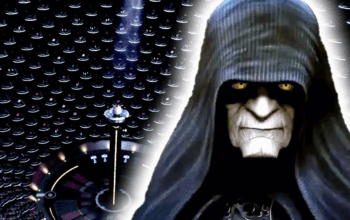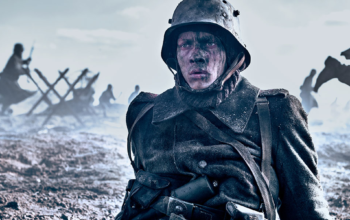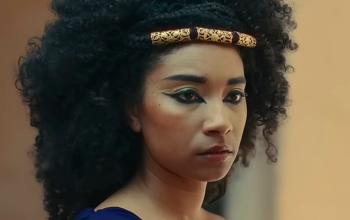After years of hit-or-miss Star Wars content, Andor arrived like a breath of fresh air. In a franchise weighed down by nostalgia, uneven writing, and formulaic storytelling, this series proved that Star Wars could still take risks—and succeed brilliantly.
It’s not just the best Star Wars show ever made—it’s one of the best shows on television in recent years. With sharp writing, grounded performances, and mature storytelling, Andor redefines what this galaxy far, far away is capable of.
Whether you’re a lifelong fan or someone who’s grown tired of lightsabers and legacy cameos, Andor stands out for all the right reasons. More importantly, it offers a blueprint for what Star Wars could be going forward—if future creators are willing to learn from it.
1. Deeply Layered Characters
Andor sets itself apart from nearly every other Star Wars project by prioritizing its intricately woven cast and their role within the galaxy. Every character—major or minor—has a clear sense of motivation, internal conflict, and narrative weight. There are no filler roles here. Everyone serves the story.
Cassian Andor, once just a supporting figure in Rogue One, is fully realized as a complex protagonist. He’s not a traditional hero—he’s a survivor shaped by trauma, oppression, and loss. His arc doesn’t simply chart a rise to rebellion; it shows the painful, incremental process of someone coming to believe that rebellion is even possible. At the start, Cassian’s motivations are more about avoiding the Empire than fighting it. He’s looking for a quiet life, something normal and safe. But after being arrested on false charges and thrown into a brutal prison system, he realizes the inescapable truth: there is no hiding from the Empire. From that moment, his mindset shifts—not out of idealism, but necessity. When he reaches out to Luthen, he understands the truth: either die forgotten, or become indispensable to something larger.
Another standout is Mon Mothma. Originally a background figure with only a few lines in Return of the Jedi and a cut cameo in Revenge of the Sith, she’s finally given the screen time and writing to become a compelling character. Genevieve O’Reilly breathes real life into Mothma, portraying a woman walking a tightrope between public loyalty and private resistance. She’s not wielding a blaster or leading armies—she’s navigating dinner parties, senatorial politics, and family tension, all while quietly funding the seeds of rebellion. Her arc is deeply grounded: a portrait of someone trying to use privilege and political capital against a system that rewards conformity and punishes dissent. It’s a subtle but powerful form of rebellion, and one of the show’s strongest elements.
Luthen Rael may be Andor’s most morally complex character—and perhaps the most morally gray figure in all of Star Wars. He isn’t just building a rebellion; he’s doing it by sacrificing everything that makes him human. His iconic monologue—about burning his life for a sunrise he’ll never see—hits like a manifesto. It’s not just a great speech; it’s the thesis of the show. Andor doesn’t romanticize rebellion—it shows the cost.
The antagonists are remarkably well-developed. Syril Karn is, in many ways, a tragic figure. He represents how disillusioned young men are often seduced by authoritarian systems. At his core, Syril is someone who believes in order and justice, but his rigid worldview and desperate need for approval make him a pawn. His failure on Ferrix and the resulting fallout don’t awaken him—they warp him further, making him obsessed and erratic. His arc isn’t redemptive, but it is revealing.
Even side characters like Bix Caleen also carry surprising emotional weight. She isn’t some action hero—she’s a regular person who has had so much horrible stuff thrown at her. Throughout the show, she endures a lot of horrific things: watching her lover die, being tortured by the Empire, and nearly being assaulted by an Imperial officer. Andor doesn’t shy away from showing the cost it takes on her mental health. Her struggle/resilience through such trauma makes her more interesting than just a stock love interest for Cassian.
These are the kinds of characters that remind us what Star Wars can be at its best—not just a battle of good versus evil, but a story about people and the impossible choices they face.
2. Impeccable Writing and Dialogue
What elevates Andor from “good Star Wars” to simply great television is the writing. Tony Gilroy and his team clearly approached this series not as a space opera, but as a serious drama set in a science fiction world. Every scene, whether a hushed conversation in a senate hallway or a tense prison escape, is infused with careful dialogue and intentional pacing.
There are many dialogue-heavy scenes that feel like something Christopher Nolan would make. Every character’s line is said with real weight.
One of the most noticeable things is how tailored the dialogue is to each group. The ISB agents speak in clipped, technical jargon—cold and clinical, just like the systems they serve. The rebels speak in uncertainty and urgency, a reflection of their fractured alliances and constant danger. And then there are moments of poetry: Luthen’s monologue about sacrifice, Nemik’s manifesto, Mon Mothma’s speech to the senate. These aren’t just standout scenes in Star Wars—they’re standout scenes in television. And the reason the work is not just the performances but also the show takes its time to explore these people’s lives.
This isn’t writing that holds your hand like the acolyte or even the Mandalorian. It expects you to pay attention, to listen, to read between the lines. Andor trusts its audience to keep up, and the result is some of the smartest, most emotionally resonant writing the franchise has ever seen.
3. Moral Ambiguity Without Compromise
The opening scene—where Cassian kills two security guards in cold blood—told me everything I needed to know: Andor was going to be something different. Not only is this perfectly in line with the morally gray character we meet in Rogue One, it also sets the tone for the entire series. Having your protagonist kill two people (even if one was accidental and both were harassing him) is a bold choice for a franchise that has historically catered to a family-friendly audience. But it’s exactly the kind of opening this show needed, because it doesn’t tiptoe around its subject matter.
Andor refuses to sanitize the Rebellion, which might be its most subversive strength. Unlike most Star Wars stories, which present the conflict in binary terms of good versus evil, Andor operates in moral shades of gray. Yes, the Empire is monstrous—it massacres civilians, weaponizes the legal system, and silences dissent through surveillance and violence. But the show also asks the harder question: what must be done to oppose such a regime? And what does that cost?
Cinta’s subplot after the Aldhani raid is one of the most unsettling examples. We never see the moment directly, but the implication is chilling—she executes not only an Imperial officer but possibly his family. There’s no dramatic score, no justification, no glory—just the cold, quiet realization that she’s chosen to become a weapon for the cause. It’s disturbing, and it should be. Rebellion here isn’t portrayed as noble fantasy—it’s moral compromise born of desperation.
The show also refuses to flinch when depicting the ugliness of oppression. The near-sexual assault scene involving Bix isn’t there for shock or spectacle—it’s grounded and horrifying, a stark reminder that authoritarian regimes don’t just kill people—they normalize abuse. There’s no fantasy gloss here. These moments push the boundaries of what Star Wars has historically shown, but they do so with purpose, not exploitation.
This all works because Andor establishes a mature, consistent tone from the very beginning. It’s dark, grounded, and doesn’t undermine itself with misplaced humor or stylized action. There are no narrative cop-outs, no off-screen resolutions meant to soften the blow. The show confronts the viewer with harsh truths about power, survival, and sacrifice.
This is also one of the biggest reasons why The Acolyte falls flat by comparison. That show’s version of “moral complexity” amounted to flipping the script: portraying the Jedi as the antagonists and the Sith as misunderstood victims. The problem is, this idea goes against everything established in Star Wars canon. It could have worked with the right amount of nuance, worldbuilding, and care, but the execution was surface-level at best. The writing lacked the emotional weight or philosophical depth needed to make such a reversal feel earned. It gestured at complexity without doing the hard work.
What makes Andor’s approach succeed is the honesty of its characters. Luthen and Cassian don’t pretend to be heroes. They don’t justify their actions as noble. They know the cost. They understand that many of their choices are necessary but ugly. And they accept that they’ll never be celebrated for it. As Luthen says in his now-iconic monologue, “I burn my life to make a sunrise I know I’ll never see.”
That’s not just a good line—it’s the soul of the show.
4. Looks like a Galaxy Far, Far Away
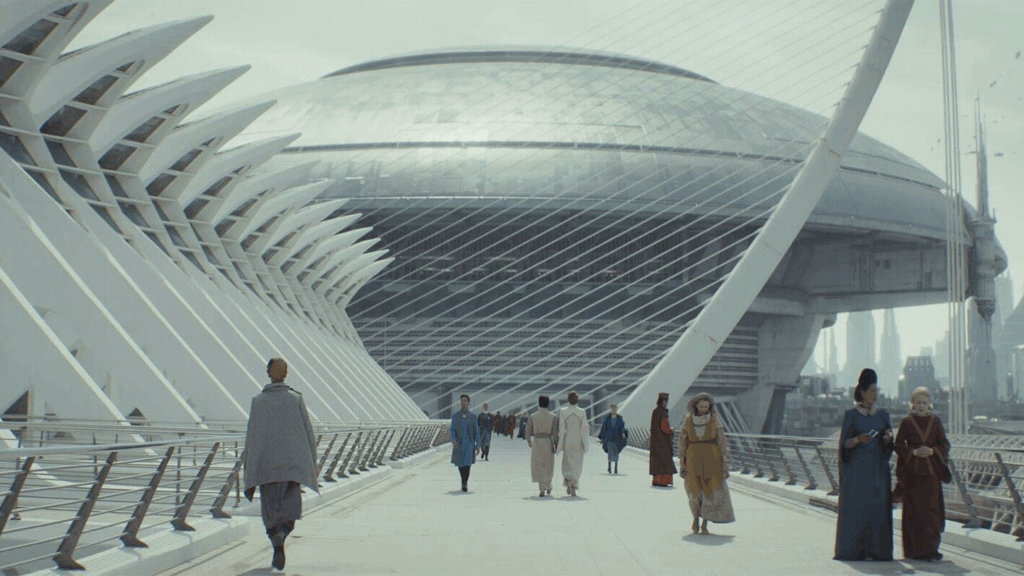
More than any other Star Wars project, Andor feels like a lived-in galaxy. This isn’t a world of glossy CGI, green-screened skylines, or endless alien cantinas. Instead, it’s a grounded universe filled with grimy city blocks, bureaucratic office spaces, crumbling industrial corridors, and densely layered public plazas. It feels real because the production team, rather than relying on The Volume or greenscreen, used practical sets built at the ever-reliable Pinewood Studios and shot many scenes on actual locations across Europe. CGI and green screen were only used when necessary. The result is a visual texture that enhances immersion in ways that many recent entries simply haven’t matched.
The use of practical sets allows for cinematography you can’t do on a volume stage. One particular Shot that’s underrated was Mothma’s greeting her daughter’s wedding guests. The camera follows her walking around her outside residence with an increased sense of tension since she sees Luthen arrive, but we don’t know it until it cuts. This is the kind of cinematography you can’t do in a volume. If they did, all Genovive O’reilly would be doing is walking in circles.
This grounded design elevates the tone of the entire series. You feel the sterile, damp oppression of Narkina 5’s prison floor. You see the cultural history of Ghorman in every architectural detail. Even Ferrix—a backwater world with no grand battles or Jedi temples—feels vibrant and alive, its people bound by community, tradition, and shared struggle. Each planet has its own personality, and Andor takes the time to make that evident. That’s a stark contrast to many modern Star Wars projects, where every other city or desert planet looks the same.
There are props that, for some, may seem too earthlike. Some mock the AK-looking blasters (For me personally it was Syril wearing a tie) that can be distracting for some hardcore fans who expect a cleaner separation between this galaxy and ours. However, that isn’t really a deal breaker, because everything around them feels so real. Andor isn’t interested in wowing you with spaceships and lasers to remind you that you’re in a fantasy universe. It wants you to believe this galaxy could actually exist.
5. Acting
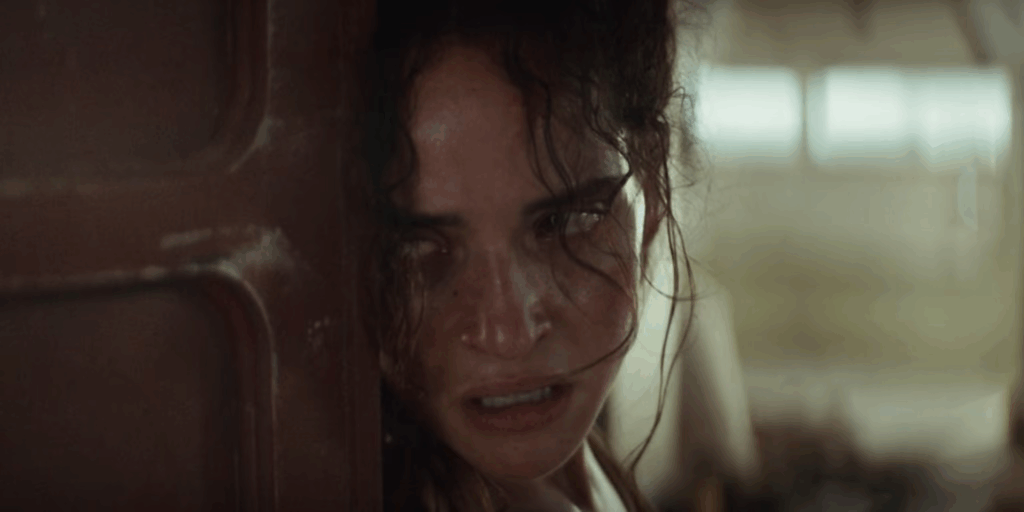
What sets Andor apart from almost every other Star Wars project is how seriously every actor takes their role, from the leads to the extras. Nobody is phoning it in, nobody is hamming it up. These are performers fully inhabiting characters shaped by fear, oppression, and also hope. It’s a level of acting commitment that has been sorely missing from the other Disney+ shows, where characters often feel like archetypes or plot devices rather than people.
Genevieve O’Reilly is a standout. After nearly two decades of playing Mon Mothma in background cameos and deleted scenes, she’s finally given the space to show what she can do—and she more than delivers. Her Mon is poised and graceful, a polished senator with the demeanor of control, but behind her eyes is constant tension. One wrong move, one misplaced word, and her entire world—including her family—could collapse. That quiet panic bubbling beneath the surface is difficult to portray, but O’Reilly nails it in every scene.
Denise Gough’s Dedra Meero is equally magnetic. She begins the series as something of an underdog within the ISB, and you almost find yourself rooting for her rise—until the mask slips. When she begins interrogating Bix, we see her true nature emerge. She becomes one of the most chilling villains in the franchise, not through force or lightsabers, but through cold, calculated control. Gough doesn’t play her as evil—she plays her as committed, which is far more unsettling. We understand her, and that’s exactly what makes her terrifying.
And then there’s Andy Serkis as Kino Loy. In just a handful of episodes, he delivers one of the most emotionally impactful performances in Star Wars history—without any CGI, motion-capture, or prosthetics. His monologue in the prison, culminating in “I can’t swim,” is gut-wrenching. All the more powerful because it comes from a man who started as a cog in the machine and found purpose too late. It’s pure acting: voice, posture, eyes. And Serkis doesn’t waste a second.
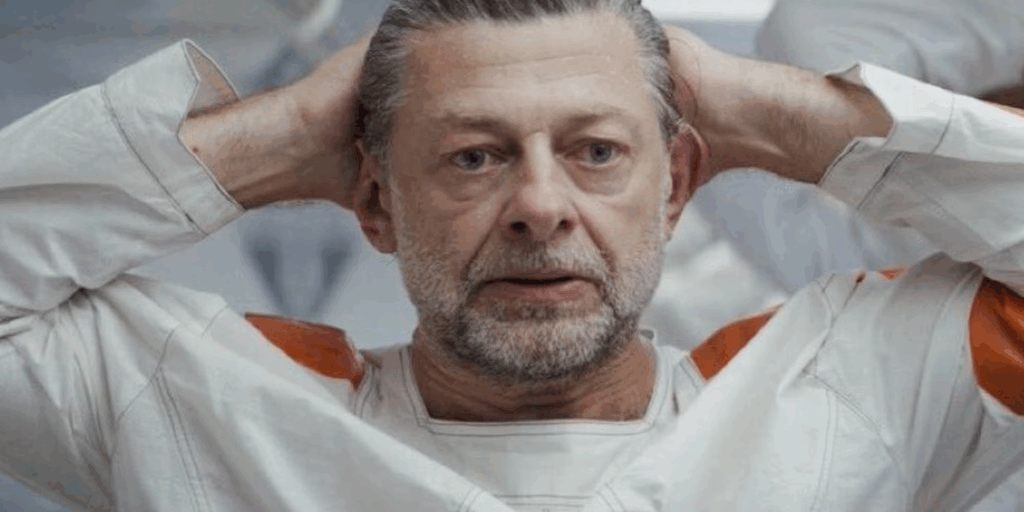
And those are just the actors that immediately come to mind. I haven’t even mentioned Stellan Skarsgård (Luthen), Adria Arjona (Bix), Elizabeth Dulau (Kleya), or Kyle Soller (Syril)—because each one of those performances could fill an entire list of their own. What makes those characters so unforgettable is the work these actors put in to make them believable, grounded, and fully fleshed out.
Even with such a sprawling ensemble, Andor never feels overstuffed or diluted. That’s thanks in part to the sheer caliber of talent involved. Across the board, everyone—from minor characters in Ferrix to ISB staffers—treats their roles with conviction. It’s clear the actors weren’t just showing up for a paycheck. They believed in the project, and that belief translates into performances that elevate the material far beyond what we’ve come to expect from Star Wars television.
6. No Jedi. No Lightsabers. No Problem.
What makes Andor distinct from every other Star Wars project is its point of view: it’s told entirely from the perspective of regular people. There are no Jedi swooping in with mystical powers. No high-tech bounty hunters slicing through squads of stormtroopers with flashy lightsabers. This is Star Wars without the fantasy. And surprisingly, it’s all the better for it.
It makes perfect sense when you consider the larger context of the Star Wars universe. If you’re familiar with the lore, the Jedi—and Force users in general—make up a minuscule fraction of the galaxy’s population. Even during the height of the Republic in the prequel era, there were only around 10,000 Jedi in a galaxy of trillions. That means the overwhelming majority of beings in the galaxy have never seen a lightsaber, let alone interacted with a Jedi.
This is partly why Tony Gilroy deliberately chose not to include cameos from Vader or the Emperor. Their presence, with their supernatural abilities and mythic stature, would clash with the grounded, human-scale aesthetic Andor relies on. Despite sharing the same universe, Andor strips away the grand mythology and focuses on the people left behind. The everyday citizens who suffer, resist, and survive. And by zeroing in on those without power, the story becomes far more relatable—and paradoxically, far more powerful.
That’s not to say the Force is ignored entirely. In fact, one of the most brilliant moments in the series is when the Force is introduced subtly, through a Force healer character. To the rest of the galaxy, the force is more of a religion than a power. To the average person in the galaxy, the Force isn’t lightning and lightsabers. It’s more like an ancient philosophy—a sense of balance, flow, and meaning drawn from nature and existence. This interpretation feels far more in line with the original inspiration for the Force: Eastern philosophies like Taoism and Buddhism.
Many viewers misinterpret the Messenger scene as the show suggesting Cassian is some kind of “chosen one.” But it’s not framed as prophecy, it’s a purpose. The Force, in this context, offers guidance, not destiny. It functions like how biblical figures are sometimes called to action—not because they’re powerful, but because they’re willing. The “Messenger” moment is a subtle foreshadowing of Cassian’s eventual mission to steal the Death Star plans and transmit them to the Alliance. It adds thematic depth without breaking the show’s grounded aesthetic.
Yes, the Force exists in this galaxy. But this story isn’t about that. It’s about a man with no special powers—just grit, pain, loss, and eventually, belief—standing up against one of the most terrifying empires in fiction. It’s about people who have every reason to hide choosing, instead, to resist.
Andor reminds us that rebellions aren’t led by chosen ones. They’re built by the forgotten, the desperate, and the brave. And that might be the most radical statement Star Wars has ever made.
7. Thematic Richness: Rebellion, Sacrifice, and Authoritarianism
More than anything, Andor is a show that fully commits to its themes, especially the theme of sacrifice. But unlike other Star Wars entries, it’s not just about the classic idea of laying down your life for a greater cause. In Andor, sacrifice is far more personal. It’s about what people give up emotionally, socially, and morally: relationships, reputations, and sometimes even their humanity.
This isn’t the first Star Wars project to explore heavy themes, but Andor leans into them with a level of commitment and maturity that’s unmatched. It doesn’t just reference rebellion—it deconstructs it. It asks hard questions: What does resistance actually cost? What are you willing to become in the fight for freedom? Can you be a hero and still live with what you’ve done?
Nowhere is this more powerfully illustrated than in Luthen’s monologue to his ISB mole—an emotionally raw speech about how he’s damned himself for a future he’ll never see.
Luthen says it plainly:
“I burn my life to make a sunrise I know I’ll never see.”
It’s personal. It’s moral. It’s ideological. And it’s devastating.
The show also dives headfirst into political territory that feels increasingly relevant. The slow creep of fascism. The use of fear as a tool of control. The erosion of institutions. The normalization of surveillance. These aren’t just backdrops—they’re the point.
Andor also doesn’t flinch when it comes to showing the emotional toll of resistance. Everyone loses something. Some lose themselves. And that emotional weight builds a world that feels tragic, lived-in, and deeply urgent.
This is rebellion, not as legend, but as a painful, slow, human struggle.
8. The Empire Finally Feels Scary Again
For too long, the Empire has been reduced to a joke. Stormtroopers who can’t aim. Officers who show up for one scene, make a dumb decision, and get killed off. Part of that is due to the nature of ‘80s action filmmaking, where style mattered more than tactics. But unfortunately, recent Star Wars media—like The Mandalorian—has embraced the meme of stormtroopers missing every shot, even at point-blank range. In other series and comics, we’ve seen imperial cadets trained not on skill but on blind obedience.
When the enemy is portrayed as incompetent, there’s no tension. It raises the question: how did the Empire last 25 years if everyone in it was this bad at their job?
Andor fixes this. It restores the fear.
The stormtroopers in Andor are rarely seen—but when they do appear, it signals that something big is about to happen. Most of the Imperial personnel we encounter are black-uniformed army or security officers— disciplined and ruthless. They aren’t caricatures. They’re bureaucrats of evil. Andor reimagines the Empire not as a comic book villain, but as a fully functional authoritarian regime. It’s not just the firepower—it’s the system. It’s the surveillance. The psychological warfare. The subtle silencing of dissent. It’s straight out of Orwell.
Dedra Meero is perhaps one of the most underrated villains in the Star Wars lineup. She has no Force powers. No flashy title like Grand Moff. She isn’t even in the upper ranks of the Empire. But what makes her terrifying is her sheer drive and ruthlessness. At first, the show even tricks you into rooting for her. She’s surrounded by smug, cutthroat colleagues in the ISB who underestimate her. We see her struggle to be heard. But once she’s in control, like during her interrogation of Bix, her true nature emerges. Calm, methodical, unwavering. The interrogation is horrifying, not because of any violence we see, but because of how real it feels. She lays out what she knows, allows no escape, and traps Bix in silence. It mirrors real-world interrogation tactics—and that’s what makes it effective.
Each location we visit in Andor reveals a different face of the Imperial machine. Ferrix shows us cultural suppression and surveillance. Narkina 5 reveals the Empire’s prison-industrial system, literally mining people for labor. But Ghorman—particularly in Season 2—is the most haunting. Over two arcs, we learn about the Ghormani people: their culture, their distinct language (definitely not French), and their slow oppression. By the time they sing their national anthem in defiance, we know them, and we feel the horror as the Empire deploys green troops specifically to provoke bloodshed. It’s a textbook example of state-engineered genocide. And it’s all so the Empire can strip-mine their world to build the Death Star.
That scene isn’t romanticized. It’s not framed as a noble sacrifice. It’s ugly, brutal, and heartbreaking. And that’s what makes the Empire scary again. Not the Death Stars or the Sith Lords—but the fact that this system works. It oppresses through efficiency. It breaks people before they ever get the chance to rebel.
It also gives context to how the Empire eventually collapses. As Nemik’s manifesto puts it:
“Tyranny requires constant effort. It breaks. It leaks. Authority is brittle. Oppression is the mask of fear.”
And in a final twist, most of the villains in Andor aren’t even defeated by the heroes. They’re just discarded. Quietly purged by the same system they served so loyally. That, too, is grounded in history—an echo of countless authoritarian regimes where even the most faithful eventually become expendable.
Conclusion: A New Standard for Star Wars
Andor isn’t just the best Star Wars show—it’s a benchmark for what storytelling in this universe can be. It proves that this galaxy, far, far away, doesn’t need lightsabers, Skywalkers, or even hope to be compelling. It just needs truth. Real characters, real stakes, real consequences.
It’s a series that dares to ask hard questions and trusts its audience to sit with the answers. It’s cinematic, ambitious, and deeply political in a way that honors the original spirit of Star Wars more than most of its recent peers. For the first time in a long while, the franchise feels dangerous again—in the best way possible.
Whether or not the rest of the saga catches up, Andor will stand as proof that Star Wars can still be art.

